The organizational structure of an HR department varies depending on the size of the business. In small businesses, the HR department tends to have a more streamlined structure, with individuals handling multiple roles. As businesses grow, the HR department expands to accommodate the needs of a larger employee base, resulting in more formalized structures with distinct hierarchies and specialized roles. This article will discuss everything you need to know about HR department structure.
Contents of this article
Part 1. What is Organizational Structure Exactly?
Organizational structure is a system used to define a company's hierarchy, roles, and responsibilities. It can also be seen as a diagram that outlines the way a company is managed, including its departments, teams, and individual roles. It is essential for any business to have an organizational structure in place to ensure that work is completed efficiently and that the right people are in the right positions. The structure of an organization is typically based on its size, business goals, and industry and can include departments such as HR department organizational structure, finance, and customer service.
Part 2. What Does an HR Organization and Team Structure Look Like?
The HR organizational structure features various departments. These departments work together to ensure effective work.
- HR Leadership:This category comprises high-level HR executives, such as the CHRO or HR Director, who are accountable for defining the HR strategy and overseeing the entire HR function.
- HR Business Partners:These HR professionals work closely with business leaders and managers to understand their needs and align HR strategies with the overall business goals. They act as a liaison between HR and the rest of the organization.
- HR Operations:This team handles the day-to-day administrative tasks of HR, which include payroll, employee data management, HRIS administration, compliance with labor laws, and employee records management.
- Employee Relations:This team is responsible for managing employee relations matters, including conflict resolution, disciplinary actions, and grievance procedures. They ensure that the company maintains a positive and productive work environment.
- Talent Acquisition:This team focuses on attracting, recruiting, and onboarding new employees. They manage job postings, source candidates, conduct interviews, and oversee the hiring process.
Part 3. Human Resources Organization Chart Examples
Human resources organizational structure chart can be of various types. The appropriate type of chart depends mainly on the size of the business.
- Human Resources Organization Chart: Small Business
In smaller enterprises, HR departments tend to have a more streamlined HR department structure due to limited resources and a relatively smaller workforce. Typically, the HR department in small businesses functions as a unit, with individuals responsible for multiple roles.
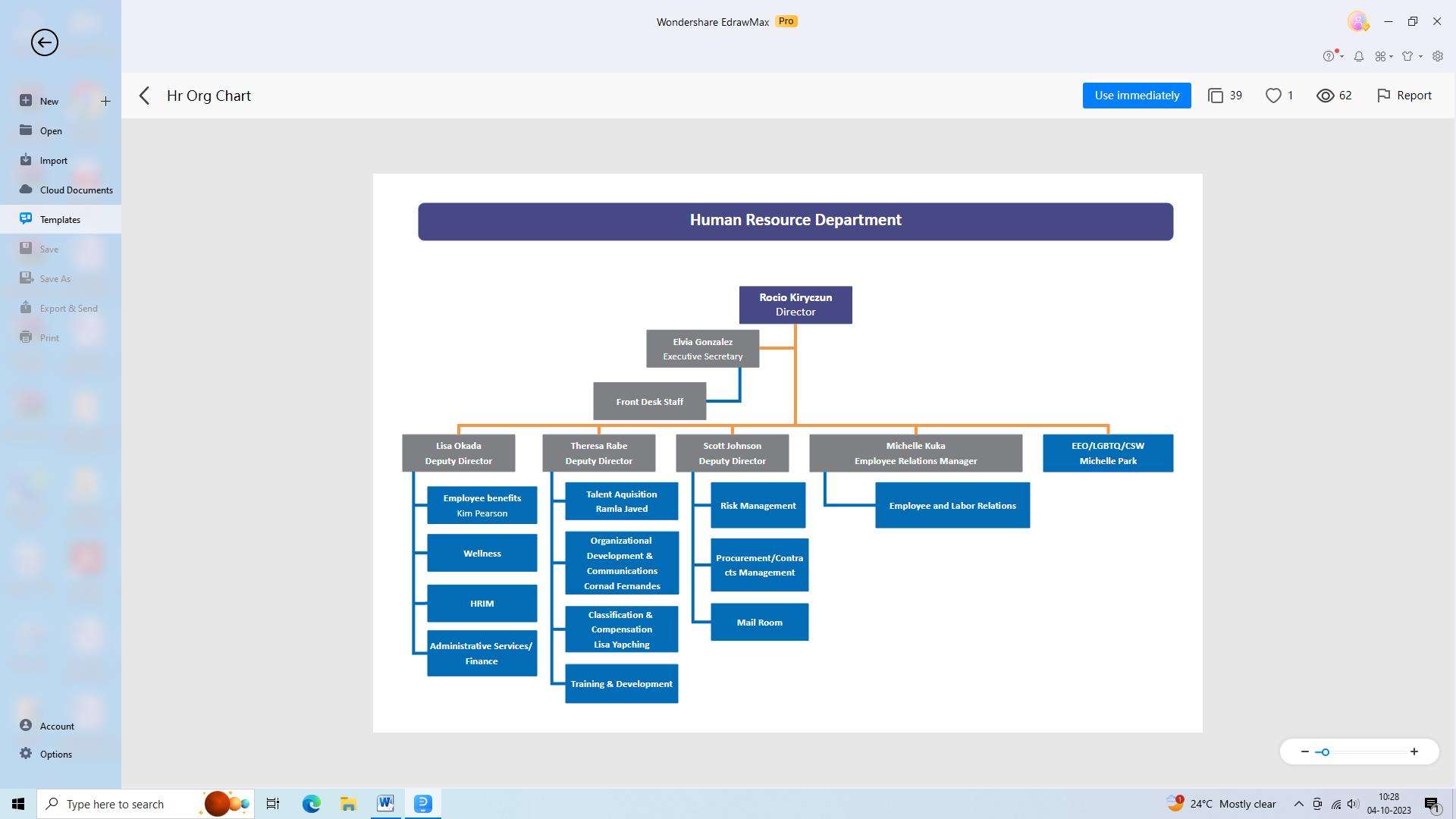
- Human Resources Organization Chart: Midsized Business
As businesses grow, their HR departments generally expand to accommodate the needs of a larger employee base. In midsized organizations, HR organizational structure becomes more formalized, often with distinct hierarchies and specialized roles.
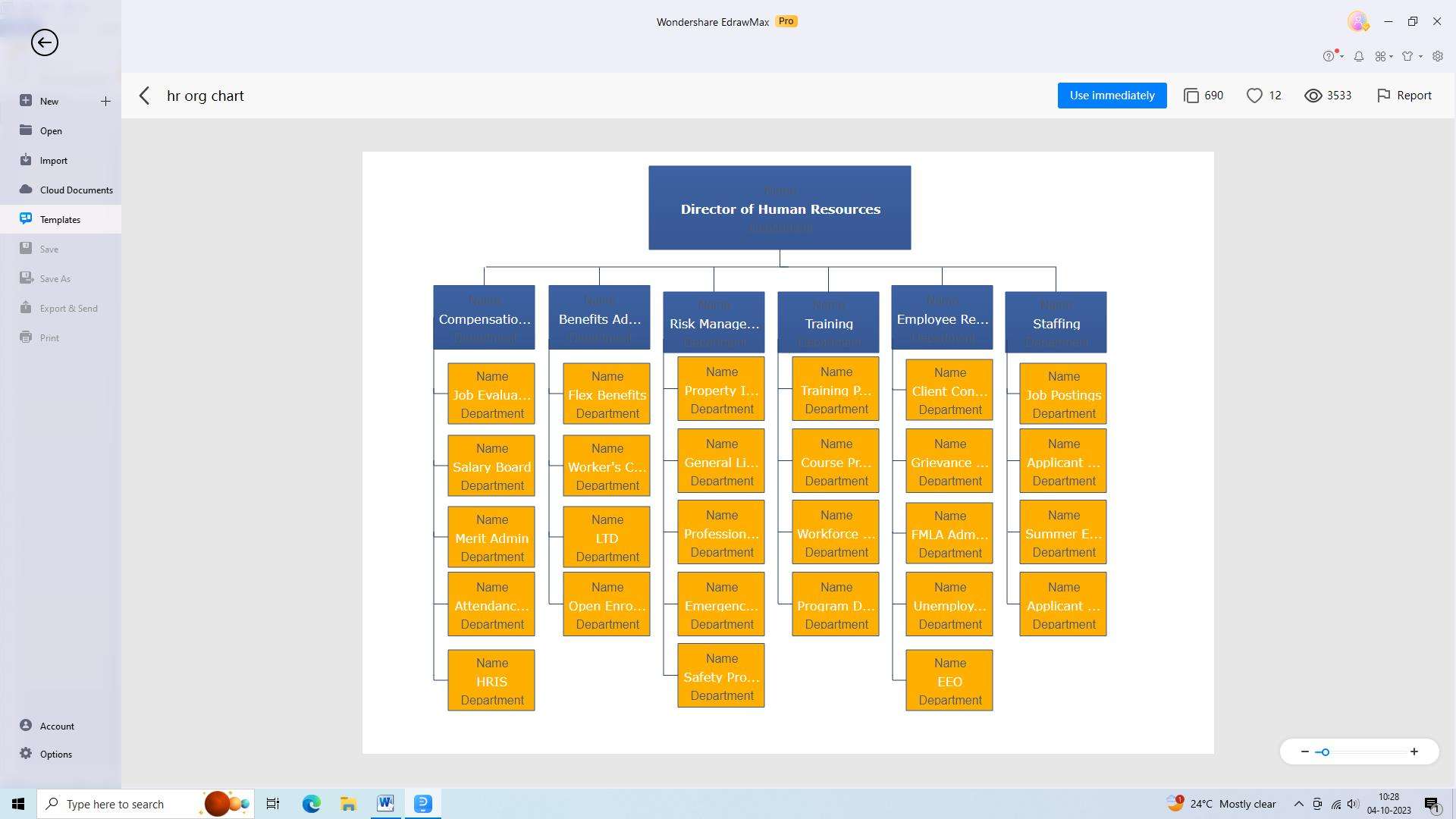
- Human Resources Organization Chart: Large Business
In larger corporations, Human Resources departments are often complex and multifaceted, requiring extensive coordination due to the size of the employee population. These HR department organizational structure charts are characterized by multiple divisions and layers of management.
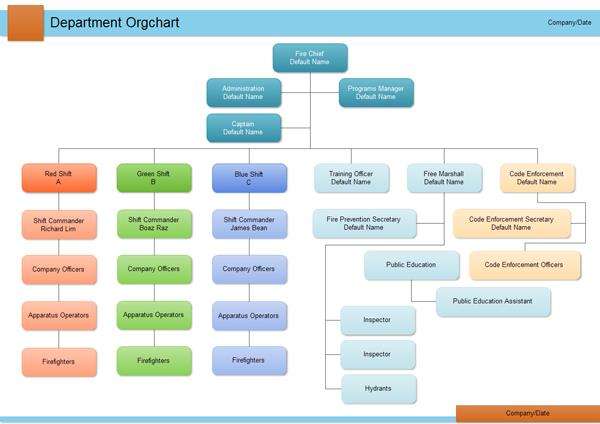
Part 4. Common Organizational Structure Types
From functional organizational structure to matrix organizational structure, organizational structures can be of various types. Each of these organizational structure types has its unique features.
- Functional Organizational Structure
Functional organizational structures are commonly employed in HR department structure where responsibilities are divided based on specific functions or areas of expertise. Individuals are grouped together based on their skills, such as recruitment, training, compensation, or employee relations. This structure ensures specialization and deep knowledge within each functional unit, facilitating greater efficiency and expertise in the respective roles.
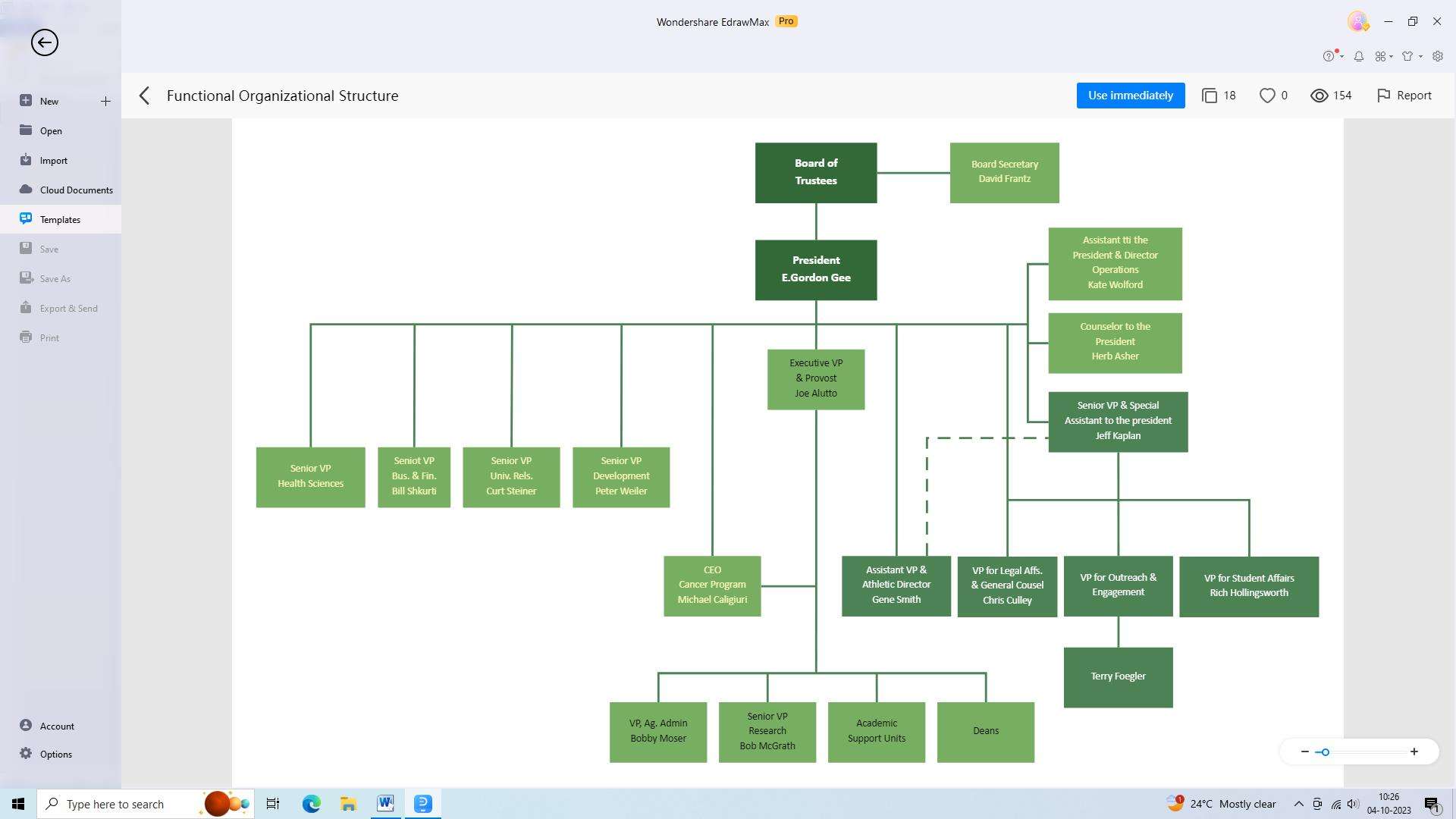
- Flat Organizational Structure
Flat organizational structures promote a more collaborative and less hierarchical environment. In HR, this structure fosters open communication and easy access to decision-makers. Instead of multiple management layers, there are often fewer positions, resulting in a more direct line of communication between employees and HR executives. Flat structures promote agility and swift decision-making, which can be beneficial for HR departments that require quick responses to evolving employee needs.
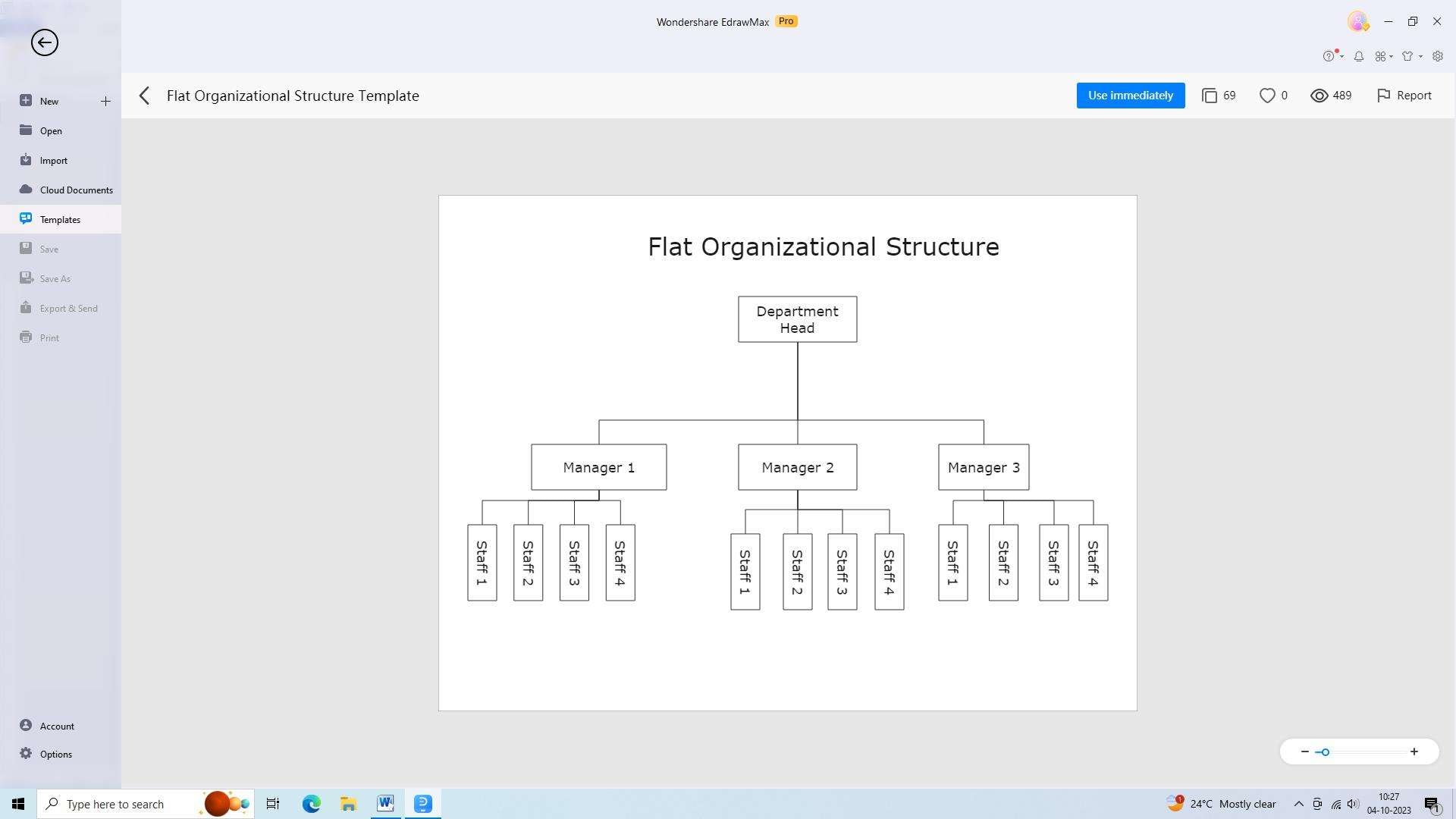
- Matrix Organizational Structure
The matrix organizational structure combines horizontal and vertical reporting relationships, forging a hybrid structure that enhances cross-functional collaboration. In HR, this HR organizational structure often involves HR professionals being assigned to specific projects or initiatives while simultaneously reporting to both project managers and HR managers. This structure allows HR personnel to maximize their efforts in meeting project-specific goals while aligning with the broader HR strategies of the organization.

Part 5. Creating HR Organization Chart With Edrawmax
Wondershare EdrawMax is an intuitive organizational chart creator tool for quickly and easily creating professional-looking organization charts. It helps you to quickly create company structure, organization charts, flowcharts, and more. It provides a wide range of powerful features and templates to get you started quickly. Here’s how you can create an HR department organizational structure chart using the tool:
Step 1: Start EdrawMax and search for the appropriate template
- Begin by launching Wondershare Edrawmax and accessing the software's library of templates.
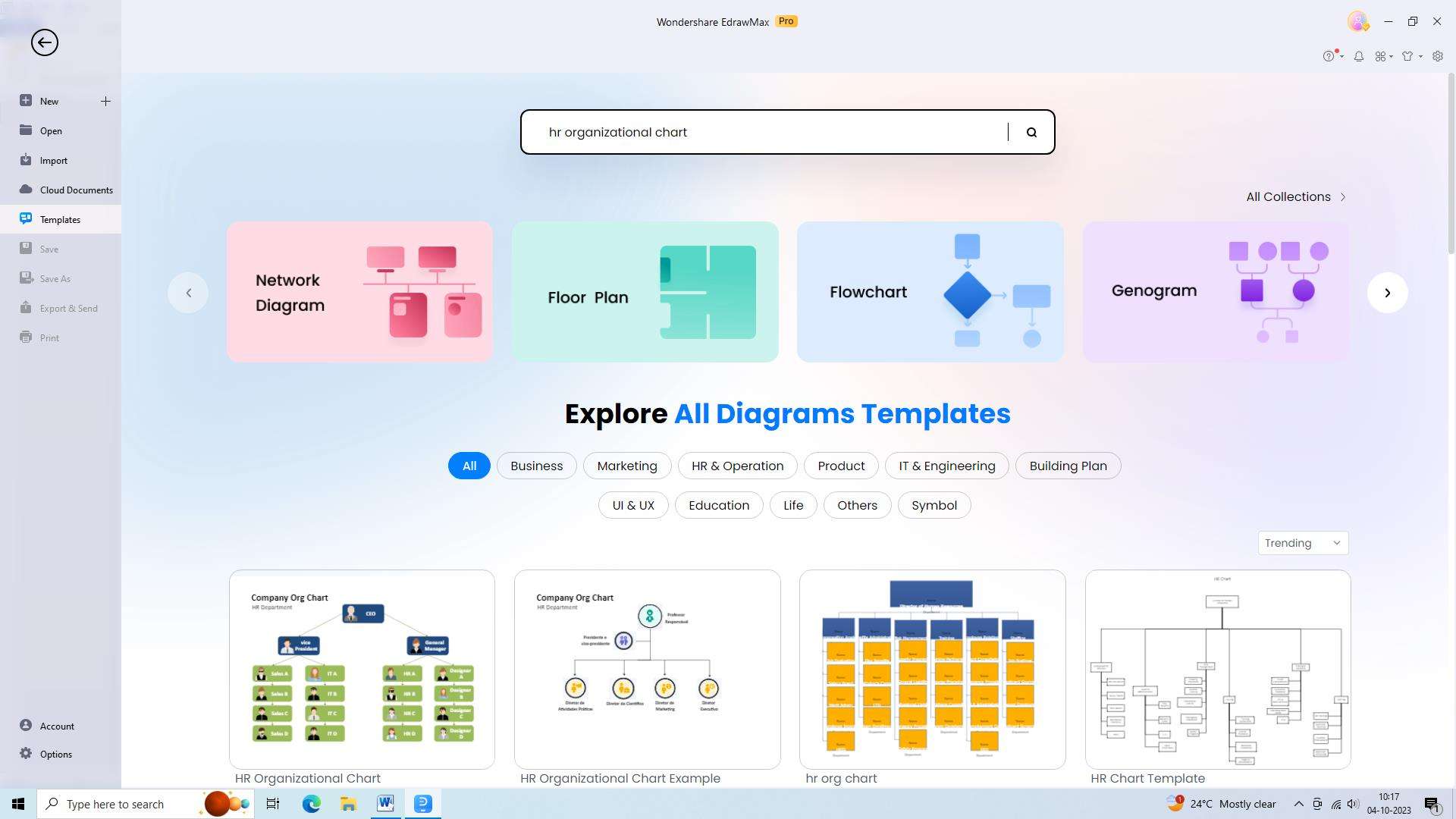
- Search for the "HR Organizational Chart" template, and click on “Use Immidiately” on the template you find suitable.
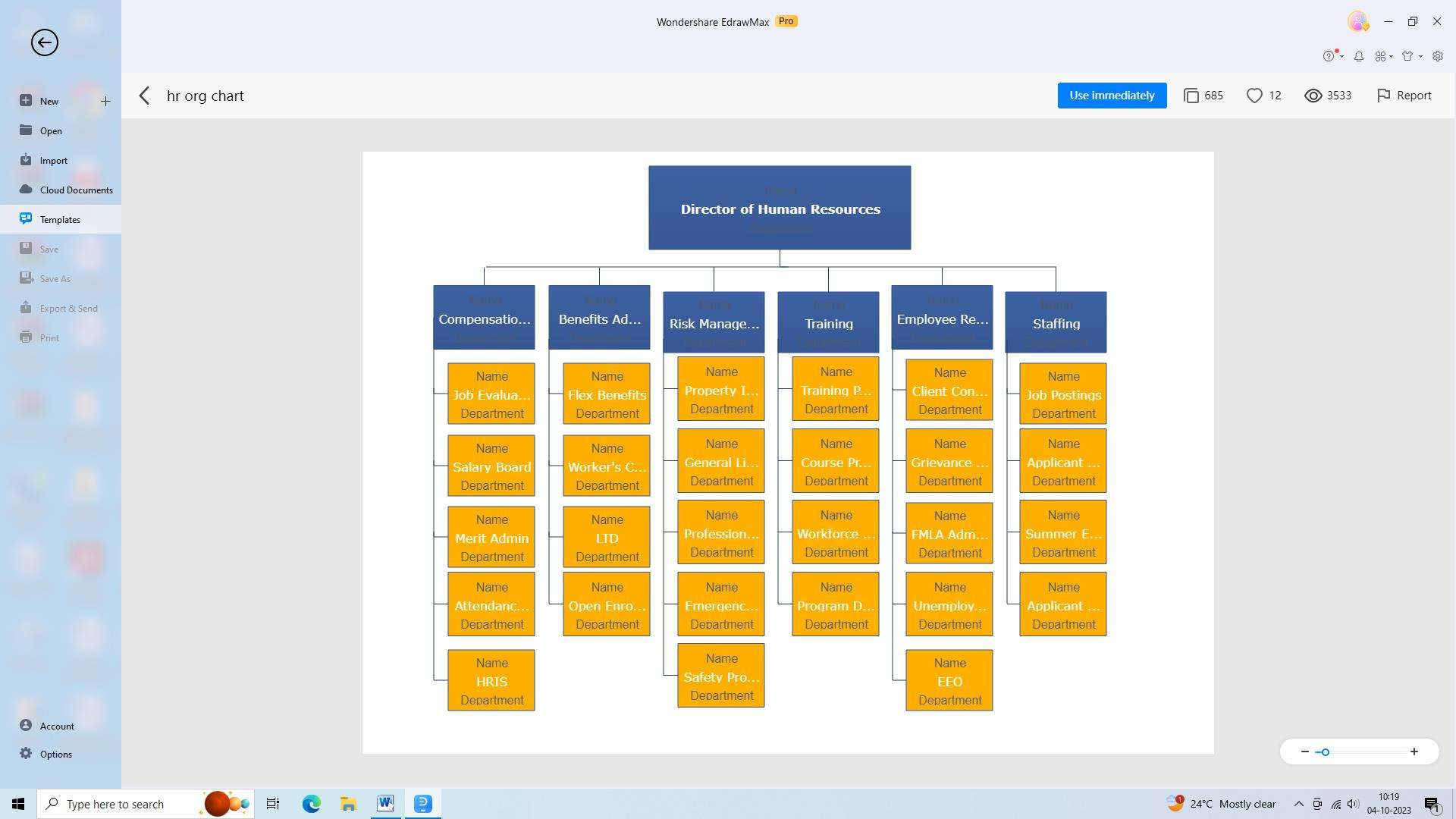
Step 2: Utilize shapes from the library
Utilize the drag-and-drop feature to place shapes from the library. Each shape should represent a specific position or role within your organization.
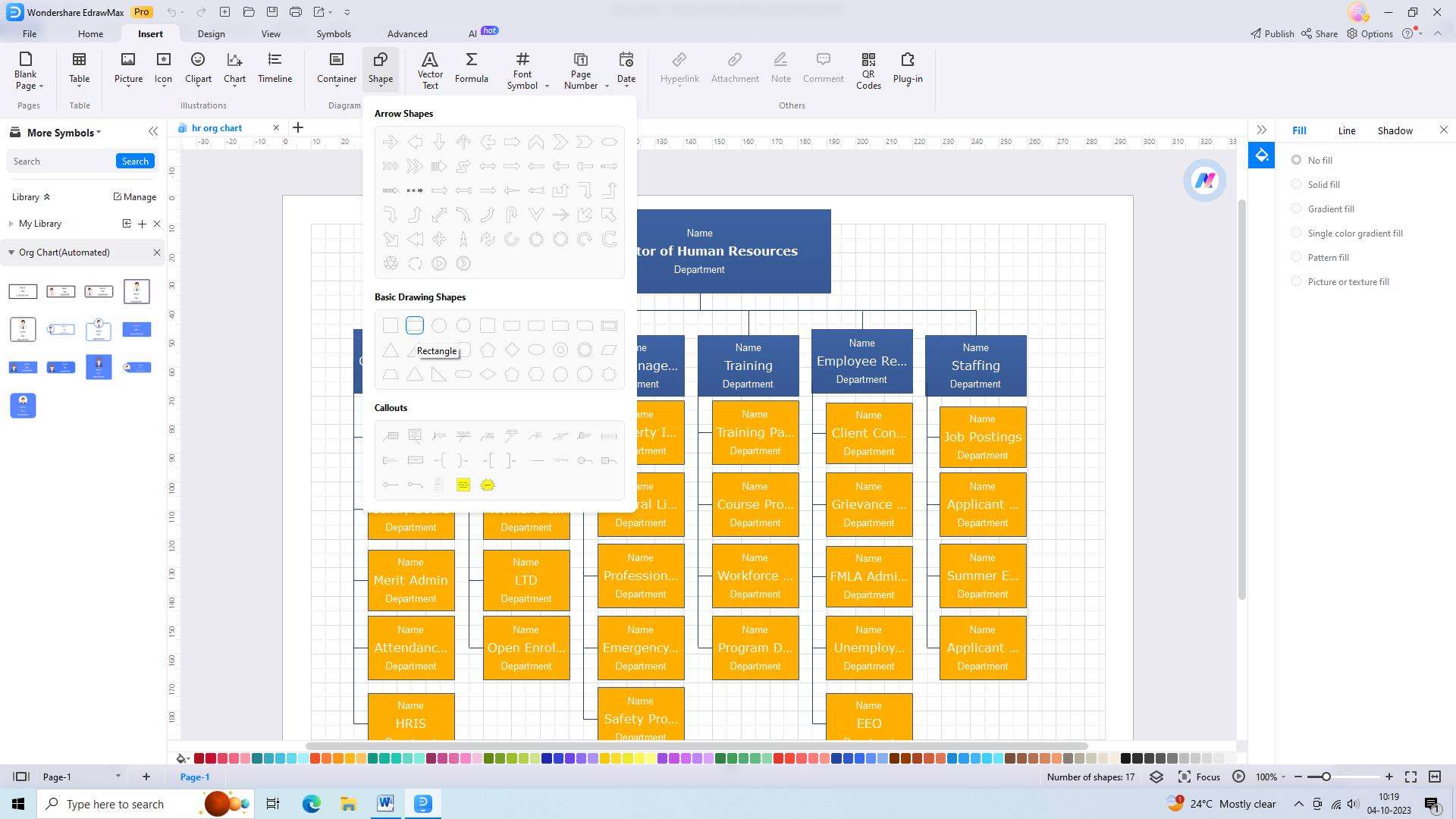
Step 3: Personalize the shapes
Personalize the appearance of the shapes by adding text, modifying colors, and applying formatting options. This customization will help differentiate between different levels or departments.

Step 4: Customize the chart layout
Click on “Design” on the toolbar to customize the chart layout as per your preference.
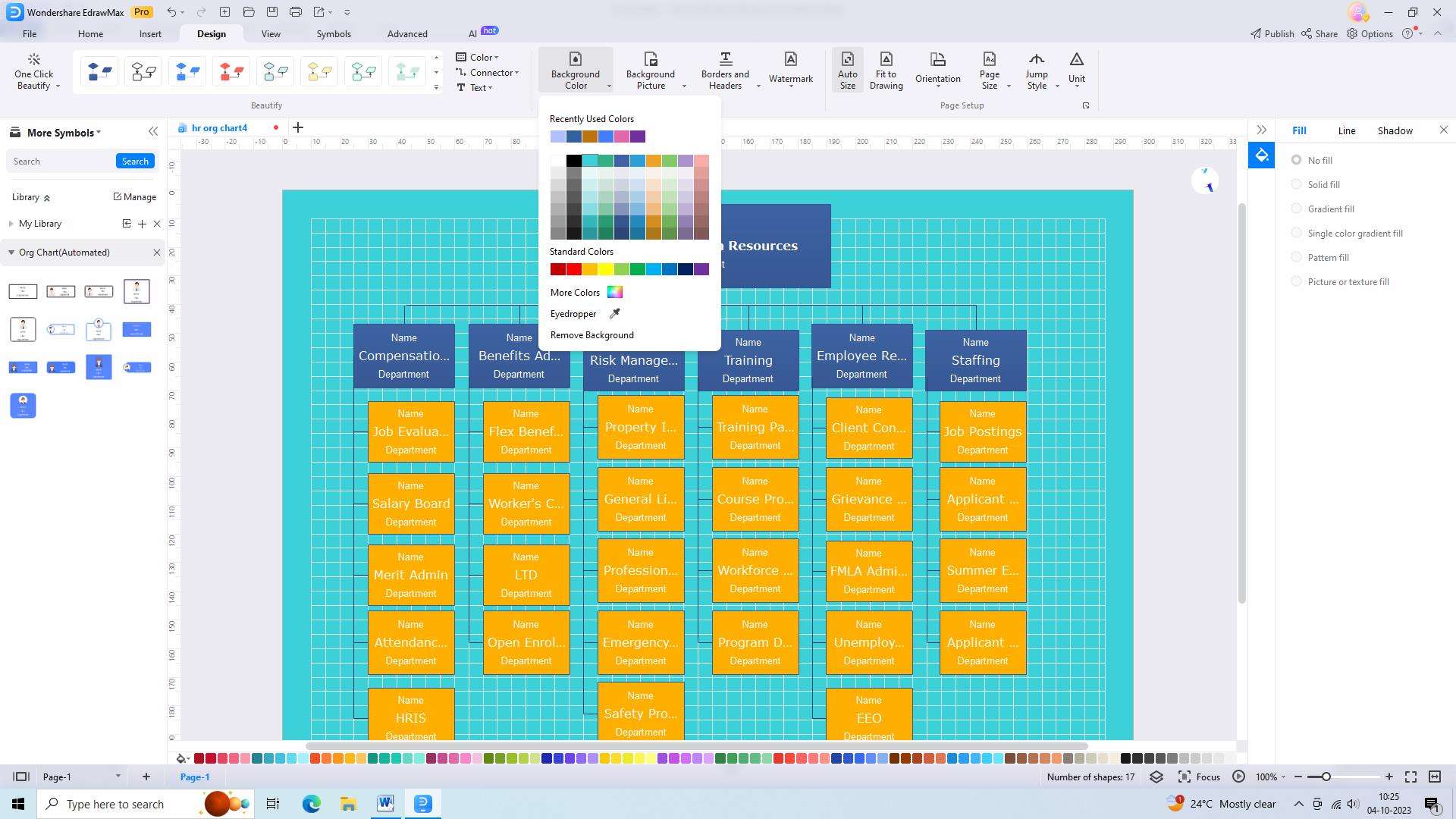
Step 5: Export the chart
Finalize your HR organizational structure chart by clicking on the "Export" button. Choose your preferred format, such as PDF or image.
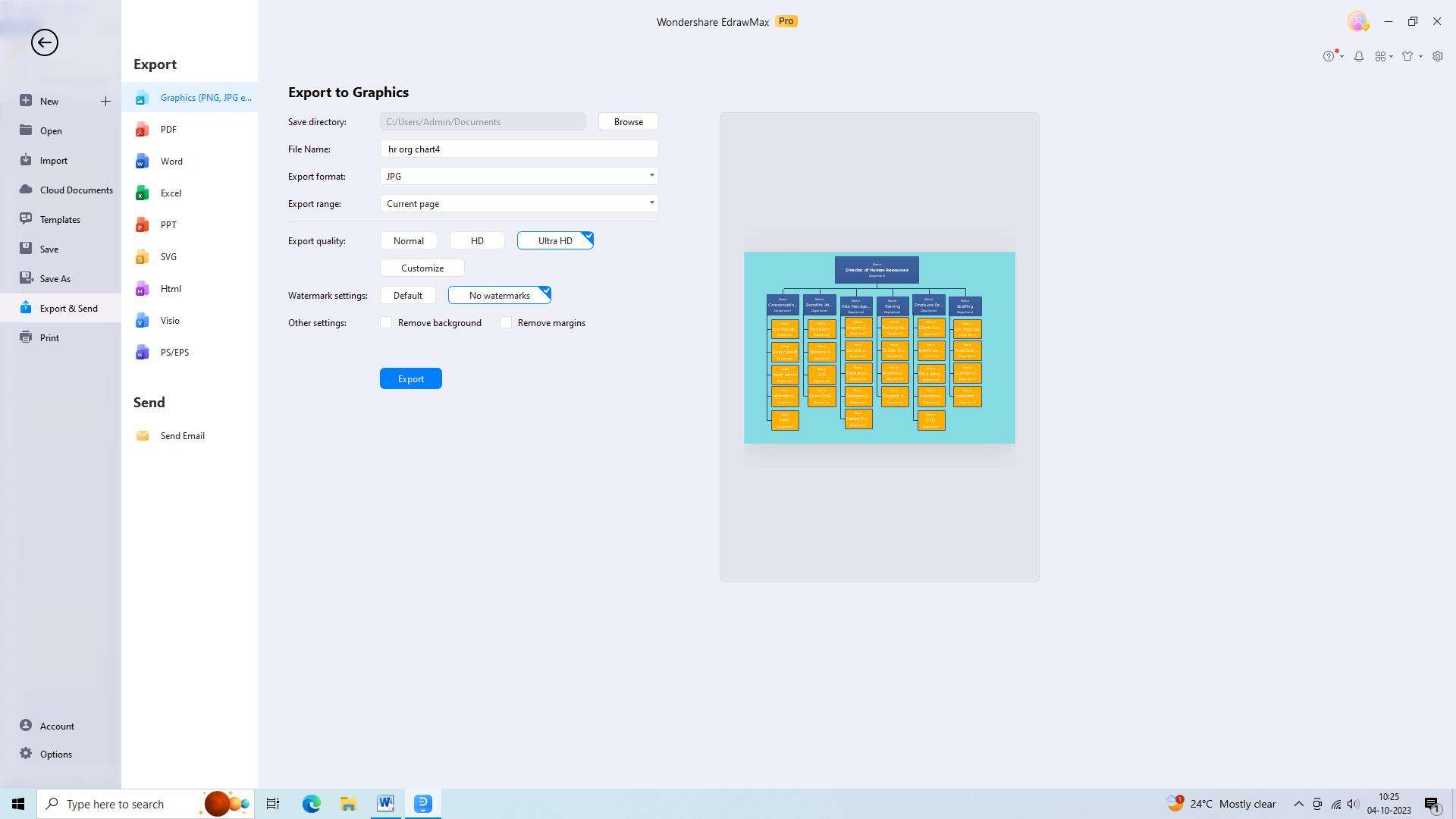
Conclusion
Regardless of the size of the business, the HR department plays a crucial role in ensuring effective people management and aligning HR strategies with overall business goals. The organizational HR department structure is designed to facilitate collaboration, streamline processes, and provide support in areas such as leadership, employee relations, talent acquisition, and HR operations. By having a well-defined structure, HR organizations can effectively meet the needs of the business and contribute to its success.




